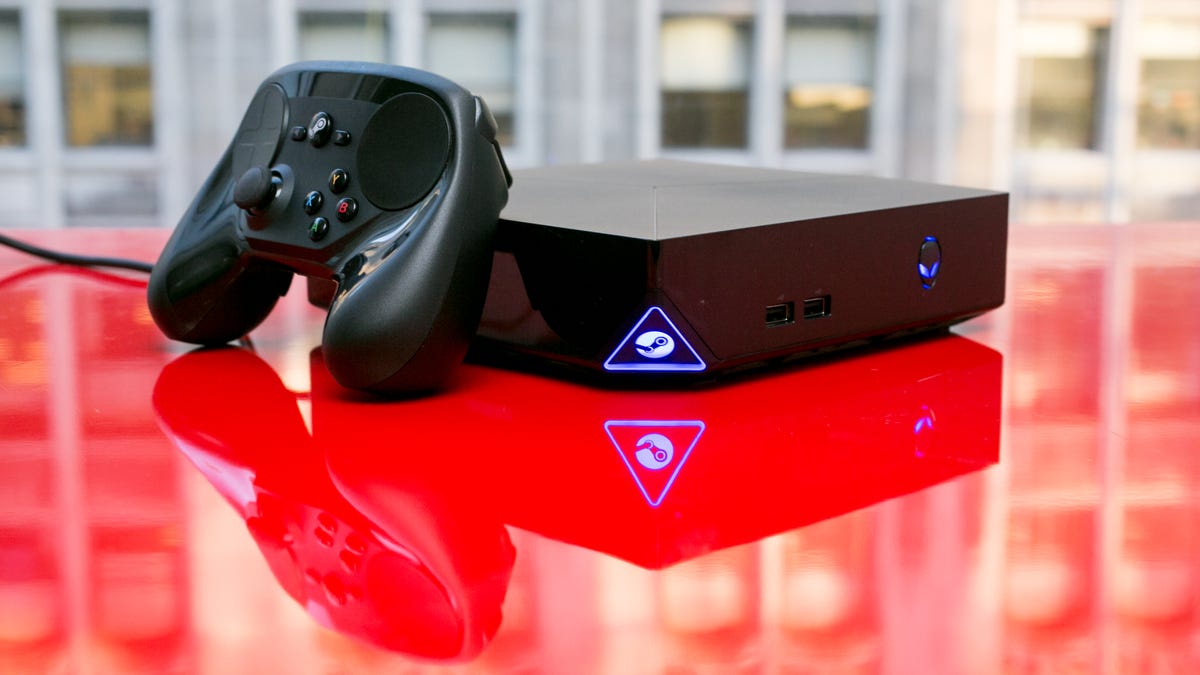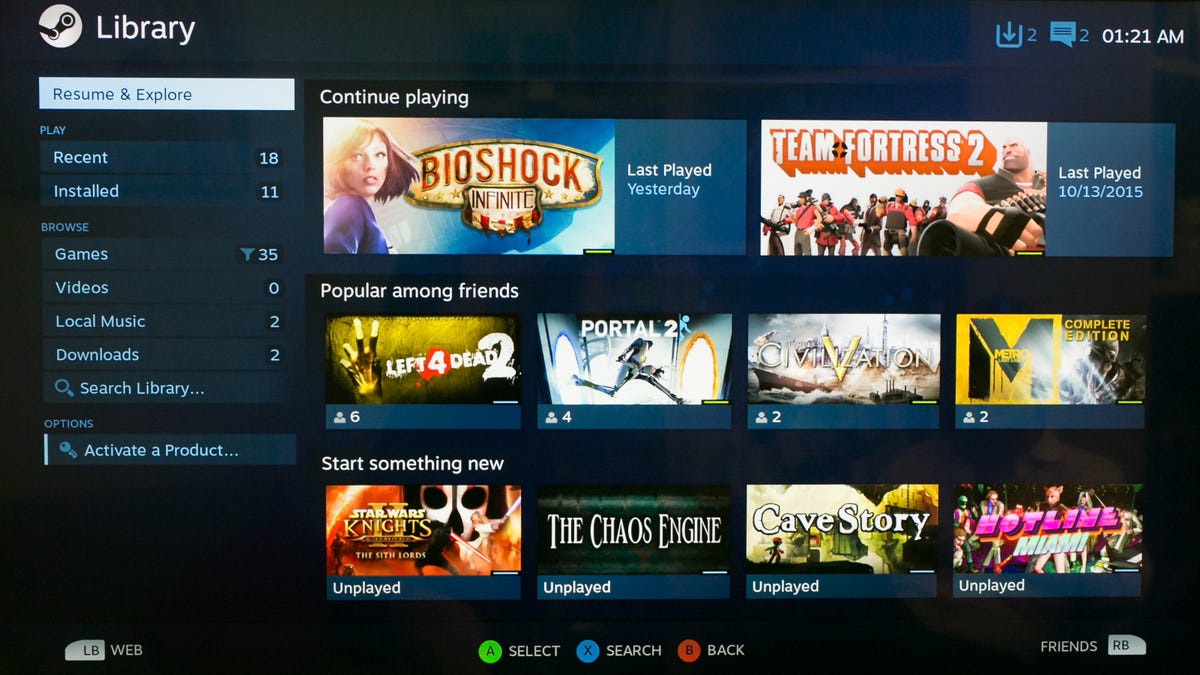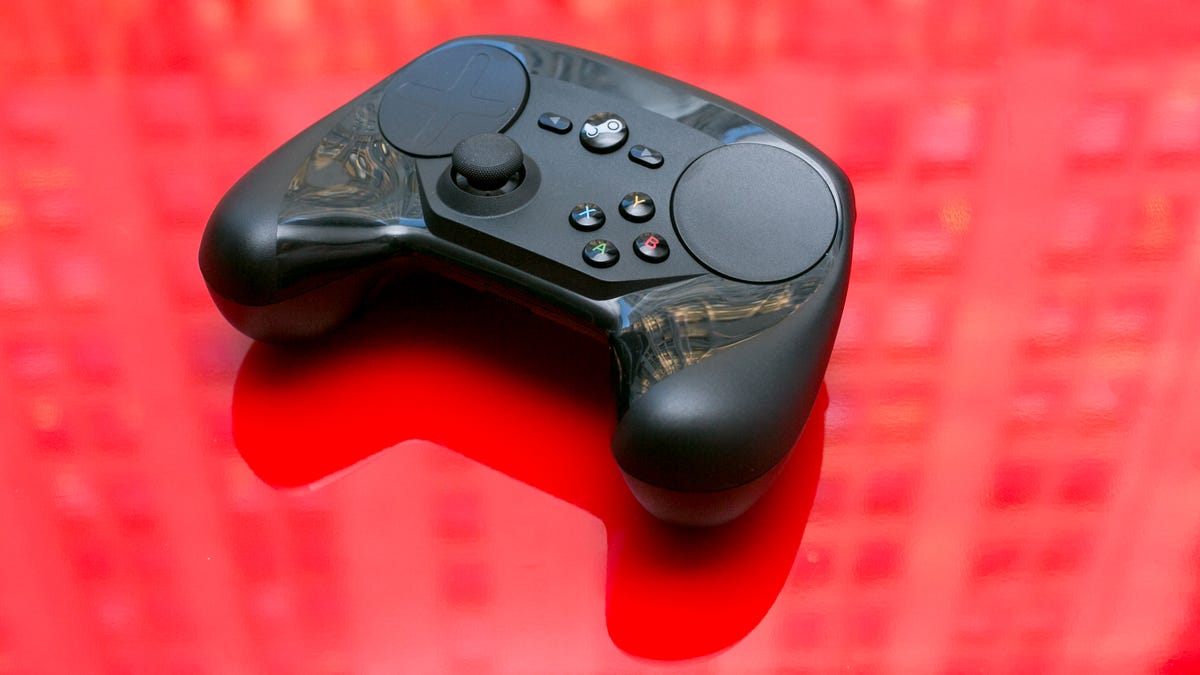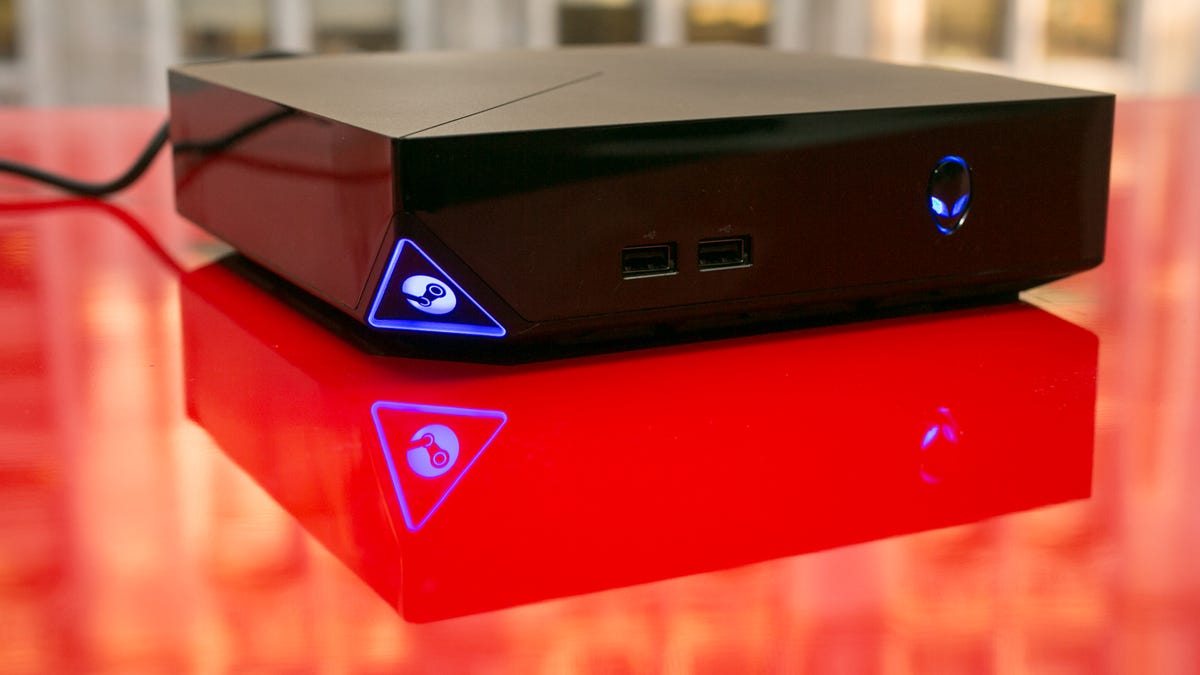 Enlarge Image
Enlarge ImageSarah Tew/CNET
Valve’s Steam Machines are designed to bring PC gaming to the living room. Thanks to the company’s new, highly customizable Steam Controller, you won’t need to lug a keyboard and mouse to your couch to play PC games. And unlike Nvidia’s Shield Android TV , you won’t need a specific graphics card to do it. Unless you’re picking up a Steam Link streaming device however, this means setting up a PC in your living room.
These PCs look a lot like a traditional gaming console (not unlike an Xbox One or PlayStation 4) and will vary in size and shape, as major players such as Alienware and Falcon Northwest offer different takes on what a Steam Machine should look like.
Read more
They’ll all share support for the Steam Controller and run the Linux-based Steam OS, Valve’s homegrown operating system that retools Steam, the PC gaming distribution platform, for TV viewing. It has an interface that makes sense on larger displays, but operates just like Steam does: Buy games, chat with your friends and check out what the community is up to. Is a Steam Machine right for you? Here a few questions to consider.
Isn’t a Steam Machine just a gaming PC?
Valve’s Steam machines aren’t exactly gaming PCs, at least not in the traditional sense. These PCs are built from the ground up with gaming in mind, but they run the Linux-based Steam OS. That means you’re largely limited to running games and apps that are available on the Steam platform.
Granted, that’s quite a hefty list. But running anything that’s not on Steam, like free indie games, or games you’ve picked up on GOG.com, will require having a separate PC on your home network to stream from. (More on this later.) Any programs you might expect to use on a traditional PC are out. There’s a basic Web browser, but don’t expect to use applications such as Microsoft Word or Adobe Lightroom.

 Enlarge Image
Enlarge ImageSarah Tew/CNET
Doesn’t that mean I’m just getting a console that only runs PC games?
I’m a dyed-in-the-wool PC gamer, but these days I usually (begrudgingly) find myself on the couch, as it faces the biggest screen in my apartment. Steam Machines attempt to bridge that gap by distilling PC gaming down to the bare essentials: an interface to get to your games, and a controller to make them playable on a TV.
It’s a great theory that mostly shakes out in practice. Download a game optimized for Steam OS and the Steam Controller, like Team Fortress 2 or Portal 2, and you’ll see firsthand Valve’s ultimate vision: Everything feels natural, as if the games were developed with the Steam controller in mind.
But grab something that isn’t specifically sanctioned by Valve, and you’ll need to spend some time configuring your controls. I’m in the middle of replaying Fallout 2, and playing that mouse-driven ancient role-playing game, and modern games that aren’t specifically designed for a gamepad, can be a bit of an endeavor. This might turn off some members of the console crowd who expect their games to “just work.” But it opens up a realm of new and classic games that were never destined for the console market.

 Enlarge Image
Enlarge ImageSarah Tew/CNET
What about games that aren’t even on Steam? Or don’t support Steam OS?
It’ll take a bit of elbow grease to get nonsanctioned games running on your Steam OS. You’ll need to stream over your home network from another PC. But here’s where the Steam Controller really shines.
In games that support a gamepad, it can look and act like a typical Xbox 360 controller, which many PC gamers use already. But customization is king here: The pair of touchpads and every button on the controller can be converted to perform another task. Games that use their own program launchers will work, streamed from another PC, though you can expect some snafus: Guild Wars 2’s launcher threw the Steam Machine for a loop and I had to walk over to my PC to log into the MMO. Once the game had started up though, everything worked as expected. I’ll still need to spend some time setting up the controls, but streaming worked flawlessly, and ran at 60 frames per second.
If you’re not satisfied with the default controller schemes for a particular game, just duck into the settings and shuffle things around. Either touchpad can behave like clickable buttons, or a virtual joystick, a virtual mouse, or even a trackball, complete with simulated momentum, so you can flick the cursor around. You can adjust the sensitivity of all of the controller’s features, including the haptic feedback motors and the gyroscope. And there’s also a “mode shift” function that promises an absurd amount of complexity. You can configure it to change what a button on the controller does when another button is pressed.
Sure, it takes a bit of effort. But once you’ve set things up just right, controlling the mouse sensitivity and assigning keyboard shortcuts to particular buttons on the keyboard, reliving an old classic like Fallout 2 on the big screen is a real treat. And if you’re playing a game that’s available on Steam, you can share your custom controller profile publicly, so others can give it a shot.

 Enlarge Image
Enlarge ImageSarah Tew/CNET
Customizing controls? For every game? Isn’t that a lot of work?
Maybe you’re lazy. That’s fine too. Consider Civilization V. I’d normally be the last person to attempt to play this data-dense, mouse- and keyboard-driven strategy game with a controller. But the game’s developer Firaxis has created a customized profile for the Steam controller. You’ll find important functions and keys set up in a way the developer feels makes sense. You can tweak these to your liking, too.
If a developer hasn’t gotten around to setting up a Steam controller profile for their game and you still don’t want to create your own, just wait for the community to pick up the slack. There aren’t too many Steam controllers in the wild just yet, but community controller configurations for games such as System Shock 2 and FTL: Faster Than Light are already available.
The Xbox One is getting Windows 10, and the PS4 has seen major updates too. What’s on tap for Steam machines?
Steam OS will continue to evolve over time. The build I’m running now isn’t yet final, and the platform won’t technically be ready for public consumption until early November. But it’s a platform that’s really going to shine as folks get on board, sharing their customized controller schemes and discovering new ways to play.
Developer support is the next part of the puzzle. Valve has taken some of the legwork out by extending support to games that aren’t Steam OS-ready, and allowing folks to stream games — including things that aren’t on Steam — from any Windows PC on their home network. Wider support for Steam OS would be welcome, but I don’t think it’s a deal breaker. Gamepad support is increasingly common these days, so even things that aren’t officially supported will be readily playable via streaming.
I can’t fathom how something like a real-time strategy game will handle, but folks are already playing games like DOTA 2 with these controllers. A viable setup for playing real-time strategy games might not be far behind, even if it isn’t necessarily workable on a competitive e-sports level.
Where do we go from here?
We’re far from done with these Steam Machines, and questions abound. Can Valve’s platform compete with the Xbox One and PlayStation 4? Does a Steam Machine even make sense, or are you better off sticking to the Steam Link, building a PC that runs Steam OS, or just sticking to good old Windows for your PC gaming needs? Will I actually be able to create a control scheme that makes Baldur’s Gate playable on a gamepad, bringing one of my most treasured gaming experiences to my TV?
Stay tuned in the coming weeks, as we figure this all out.




